Python Multiple Graphs In One Plot
Data visualization is an essential part of data analysis and interpretation. It allows us to understand complex information quickly and make informed decisions. Python, with its powerful libraries such as matplotlib, offers a wide range of options for creating visualizations. One common requirement is the need to display multiple graphs in one plot, which can provide a comprehensive view of the data.
Benefits of using multiple graphs in one plot
There are several advantages to presenting multiple graphs in one plot. Firstly, it enables us to compare and contrast different datasets easily. Instead of flipping between multiple plots, we can visualize all the relevant information in a single display. This saves time and effort, especially when exploring large datasets or conducting a detailed analysis.
Secondly, multiple graphs in one plot help in identifying relationships between variables. By plotting multiple graphs side by side, we can visually assess any correlations or patterns that might exist. This can lead to deeper insights and a better understanding of the data.
Lastly, combining multiple graphs in one plot enhances the overall aesthetics of the visualization. It allows us to create a visually appealing and informative plot that can effectively communicate the intended message to the audience.
Different types of graphs that can be plotted together
Python provides numerous options for plotting graphs, and it is possible to combine various types of graphs in a single plot. Some common types of graphs that can be plotted together include:
1. Line graphs: Line graphs are used to represent continuous data and show the relationship between two variables over a continuous interval. Multiple line graphs can be plotted together to compare trends or patterns.
2. Bar graphs: Bar graphs are ideal for categorical or discrete data. By placing multiple bar graphs side by side, we can visually compare different categories or groups.
3. Scatter plots: Scatter plots are useful for visualizing the relationship between two variables. By overlaying multiple scatter plots, we can compare the data points and understand any trends or clusters.
4. Histograms: Histograms are used to display the distribution of a continuous variable. By plotting multiple histograms in one plot, we can compare the distributions of different variables.
5. Pie charts: Although pie charts are not typically combined in the same plot, they can be used alongside other graphs to provide additional context or summaries.
How to create multiple graphs in one plot using matplotlib
The matplotlib library in Python provides a straightforward way to create multiple graphs in one plot. Here is a step-by-step guide on how to achieve this:
1. Import the necessary libraries: Start by importing the matplotlib library and any other required libraries, such as numpy or pandas.
2. Prepare the data: Organize the data that needs to be plotted. Ensure that the data is in a suitable format, such as lists, arrays, or pandas dataframes.
3. Create a figure and subplots: Use the matplotlib `subplots()` function to create a figure and set up subplots within it. Specify the number of rows and columns of subplots you want in the plot.
4. Plot the graphs: For each subplot, use the relevant matplotlib function to plot the desired graph type. Customize the visualization as needed by providing appropriate arguments and parameters.
5. Customize the layout: Adjust the overall layout of the plot by modifying the spacing, labels, titles, and other visual elements. You can use functions like `tight_layout()` to automatically optimize the spacing between subplots.
6. Show the plot: Finally, use the `show()` function to display the plot on the screen.
Techniques for customizing and configuring multiple graphs in one plot
Matplotlib provides various techniques for customizing and configuring multiple graphs in one plot. Some of the useful techniques include:
1. Customizing colors and styles: You can set custom colors and line styles for each graph to make them visually distinguishable. Matplotlib offers a wide range of predefined colors and line styles, or you can specify your own.
2. Adding legends: Legends help in identifying different graphs within the plot. You can add a legend to the plot to provide a key for understanding the visual elements.
3. Adjusting subplot sizes: Matplotlib allows you to adjust the size and position of each subplot within the plot. This is useful when you want to emphasize certain graphs or allocate more space to specific visual elements.
4. Annotating data points: You can annotate specific data points within each graph by adding text or markers. This helps in highlighting important observations or trends.
5. Adding titles and labels: Titles and labels provide additional context and information about the plot. You can add titles to the overall plot and individual graphs, as well as labels for the x and y axes.
Tips for effectively presenting multiple graphs in one plot
Presenting multiple graphs in one plot can be challenging. Here are some tips to ensure that your visualization is effective and easy to understand:
1. Limit the number of graphs: While combining multiple graphs in one plot can be beneficial, it is important not to overcrowd the visualization. Limit the number of graphs to a reasonable amount to avoid overwhelming the audience.
2. Arrange the graphs logically: Arrange the graphs in a logical order that facilitates comparison and understanding. Group related graphs together or place them side by side to highlight similarities or differences.
3. Use clear and informative labels: Provide clear and informative labels for each graph, such as titles or subtitles. This helps the audience quickly grasp the content and purpose of each graph.
4. Employ consistent scales and axes: Ensure that the scales and axes are consistent across all the graphs. This allows for accurate comparison and prevents misleading interpretations.
Examples and case studies showcasing the use of multiple graphs in one plot
Example 1: How to plot 2 graphs on the same plot in Python
import numpy as np
import matplotlib.pyplot as plt
x = np.linspace(0, 10, 100)
y1 = np.sin(x)
y2 = np.cos(x)
plt.plot(x, y1, label=”Sin(x)”)
plt.plot(x, y2, label=”Cos(x)”)
plt.legend()
plt.show()
Example 2: Pandas dataframe plot multiple lines
import pandas as pd
import matplotlib.pyplot as plt
data = pd.DataFrame({‘x’: range(10), ‘y1’: range(10), ‘y2′: range(10, 20)})
data.plot(x=’x’, y=[‘y1’, ‘y2’])
plt.show()
FAQs
Q: How can I plot multiple line graphs in one plot using matplotlib?
A: To plot multiple line graphs in one plot using matplotlib, you can use the `plt.plot()` function multiple times with different datasets. Make sure to assign a unique label to each line using the `label` parameter. Finally, call `plt.legend()` to display the legend identifying each line.
Q: Can I draw two plots side by side in Python?
A: Yes, you can draw two plots side by side in Python by creating subplots with a row of 1 and columns of 2. Each subplot will represent a different plot, which you can customize independently.
Q: How can I show multiple plots in Python?
A: To show multiple plots in Python, you can use the `plt.show()` function after creating and customizing all the desired plots. This will display all the plots simultaneously.
Q: Is it possible to plot 2 graphs in MATLAB?
A: Yes, MATLAB allows you to plot multiple graphs using the `plot()` function. You can plot each graph individually and customize them accordingly.
Q: How can I plot multiple lines in a pandas dataframe?
A: To plot multiple lines in a pandas dataframe, you can specify the columns containing the data for each line in the `y` parameter of the `data.plot()` function. Use the `x` parameter to specify the column containing the x-axis values.
Q: Can matplotlib show multiple figures at once?
A: Yes, matplotlib can show multiple figures at once by calling the `plt.show()` function after creating and customizing all the desired figures. This will display all the figures simultaneously.
In conclusion, combining multiple graphs in one plot using Python and libraries like matplotlib offers an effective way to visualize and analyze complex datasets. By following the outlined steps and utilizing appropriate customization techniques, you can create visually appealing and informative plots that convey meaningful insights to your audience. Whether it’s plotting 2 graphs on the same plot, drawing multiple plots side by side, or showcasing multiple lines in a pandas dataframe, Python provides the necessary tools to fulfill your visualization needs.
Python Matplotlib Tutorial #11 For Beginners – Plotting Several Graphs
How To Combine Two Graphs In Matplotlib?
Matplotlib is a widely-used plotting library in Python that allows users to create a wide range of visualizations. One common requirement when creating visualizations is to combine multiple graphs into a single figure. In this article, we will explore various techniques to combine two graphs in Matplotlib and create visually appealing and informative visualizations.
1. Creating Multiple Axes in a Figure:
The first approach to combine two graphs in Matplotlib is to create multiple axes within a single figure. Matplotlib provides the `subplot()` function that allows us to divide the figure into a grid of subplots and assign each subplot to a specific axis. By creating two separate axes within the same figure, we can plot our two graphs and combine them into a single visualization. Here’s an example:
“`python
import matplotlib.pyplot as plt
# Creating a figure with 2 axes
fig, (ax1, ax2) = plt.subplots(1, 2)
# Plotting the first graph on the first axis
ax1.plot(x1, y1)
# Plotting the second graph on the second axis
ax2.plot(x2, y2)
# Adding labels and titles to the axes
ax1.set_xlabel(‘X-axis’)
ax1.set_ylabel(‘Y-axis’)
ax1.set_title(‘Graph 1’)
ax2.set_xlabel(‘X-axis’)
ax2.set_ylabel(‘Y-axis’)
ax2.set_title(‘Graph 2′)
plt.show()
“`
2. Overlaying Graphs:
Another way to combine two graphs is by overlaying them on the same axis. This approach is useful when we want to compare the trends or patterns between the two datasets. To overlay graphs, plot the first graph using `plot()` and then plot the second graph using the same `plot()` function. Here’s an example:
“`python
import matplotlib.pyplot as plt
# Plotting the first graph
plt.plot(x1, y1, label=’Graph 1′)
# Plotting the second graph on the same axis
plt.plot(x2, y2, label=’Graph 2’)
# Adding labels and titles to the graph
plt.xlabel(‘X-axis’)
plt.ylabel(‘Y-axis’)
plt.title(‘Combined Graphs’)
# Adding a legend
plt.legend()
plt.show()
“`
3. Combining Subplots:
In certain scenarios, we may want to create subplots and combine them into a single layout. Matplotlib provides the `gridspec` module that enables the creation of subplots with custom layouts. This approach is particularly useful when we want to have more control over the arrangement of our graphs. Here’s an example:
“`python
import matplotlib.pyplot as plt
import matplotlib.gridspec as gridspec
# Creating a layout with 2 rows and 1 column
gs = gridspec.GridSpec(2, 1)
# Plotting the first graph in the top row
ax1 = plt.subplot(gs[0])
ax1.plot(x1, y1)
# Plotting the second graph in the bottom row
ax2 = plt.subplot(gs[1])
ax2.plot(x2, y2)
# Adjusting the spacing between subplots
plt.tight_layout()
plt.show()
“`
FAQs about Combining Two Graphs in Matplotlib:
Q: Can I combine more than two graphs in Matplotlib?
A: Yes, you can combine any number of graphs using the above techniques. For `subplot()`, simply adjust the number of rows and columns in the grid. For overlaying graphs, use multiple `plot()` commands. For combining subplots, modify the layout using `gridspec`.
Q: Can I customize the appearance of individual graphs when combining them?
A: Yes, you can customize each graph individually. For `subplot()`, assign different axes to each subplot and modify their properties separately. For overlaying graphs, use separate `plot()` commands for each graph and customize their properties. For subplots with gridspec, assign different axes to each subplot and modify them accordingly.
Q: Can I combine different types of graphs, such as a line graph and a bar graph?
A: Yes, you can combine different types of graphs in Matplotlib. Simply plot each graph using the appropriate plot function (`plot()`, `bar()`, etc.) within the same axis or subplot.
Q: Can I save the combined graphs as an image or file?
A: Yes, you can save your combined graphs using the `savefig()` function in Matplotlib. Simply call it before `plt.show()` and provide the desired filename with the appropriate file format (e.g., “combined_graphs.png”).
Combining two graphs in Matplotlib allows us to create comprehensive visualizations by presenting multiple datasets in a single figure. Whether it’s creating subplots, overlaying graphs, or combining different graph types, Matplotlib provides the flexibility and functionality to meet our visualization needs. Experiment with these techniques to present your data effectively and gain insights from complex datasets.
How To Plot Multiple Data In Matplotlib?
Matplotlib is a popular data visualization library in Python that allows users to create a wide range of charts and graphs. One of its key features is the ability to plot multiple data sets on the same graph, making it easier to compare and analyze different datasets. In this article, we will explore how to plot multiple data in Matplotlib and provide a comprehensive guide to help you utilize this powerful functionality effectively.
1. Importing the necessary libraries
Before diving into plotting multiple data sets, let’s start by importing the required libraries. We need both Matplotlib and NumPy to handle the array operations. You can install these libraries using pip, a package manager for Python, with the following command in your terminal:
“`
pip install matplotlib numpy
“`
After installing them, you can import them into your Python script using the import statements:
“`python
import matplotlib.pyplot as plt
import numpy as np
“`
2. Creating the dataset
For the purpose of this article, let’s create two simple datasets: dataset A and dataset B. We will use NumPy to generate these datasets. NumPy’s np.random.randn() function can be used to generate random data points. Here’s an example of generating two datasets of 100 random numbers each:
“`python
# Generating dataset A
np.random.seed(1)
data_a = np.random.randn(100)
# Generating dataset B
np.random.seed(2)
data_b = np.random.randn(100)
“`
In this example, we use np.random.seed() to ensure that the random numbers generated are the same every time the code is executed. This allows for reproducibility and easier comparison between different plots.
3. Plotting the data
To plot multiple datasets, we can use the plt.plot() function of Matplotlib. We can specify the dataset for the x-axis and y-axis as separate arguments in the function. Additionally, we can provide a label for each dataset for better visualization.
“`python
# Plotting dataset A
plt.plot(data_a, label=’Dataset A’)
# Plotting dataset B
plt.plot(data_b, label=’Dataset B’)
# Displaying the legend
plt.legend()
# Displaying the plot
plt.show()
“`
In the above code snippet, we plot dataset A using plt.plot() and provide it with the label ‘Dataset A’. Similarly, we plot dataset B with the label ‘Dataset B’. The plt.legend() function is used to display the legend indicating which dataset corresponds to which line on the graph. Finally, plt.show() is called to display the plot.
4. Customizing the plot
Matplotlib provides a range of customization options to make your plots visually appealing and easier to interpret. For instance, you can assign different colors to each dataset using the color argument, modify the line style using the linestyle argument, and specify the marker style using the marker argument. Here’s an example:
“`python
# Customizing the plot
plt.plot(data_a, color=’blue’, linestyle=’-‘, marker=’o’, label=’Dataset A’)
plt.plot(data_b, color=’red’, linestyle=’–‘, marker=’s’, label=’Dataset B’)
# Displaying the legend
plt.legend()
# Displaying the plot
plt.show()
“`
In this example, we set the color of data A to blue and data B to red. We also modify the line styles to a solid line for data A and a dashed line for data B. Additionally, we specify markers as circles and squares for data A and data B, respectively.
5. Plotting multiple data types
Matplotlib allows you to plot not only multiple datasets but also multiple data types, such as lines, scatter plots, and bar charts, all on the same graph. To demonstrate this, let’s create another dataset, dataset C, and plot it as a scatter plot alongside datasets A and B:
“`python
# Generating dataset C
np.random.seed(3)
data_c = np.random.randn(100)
# Plotting datasets A, B, and C
plt.plot(data_a, color=’blue’, linestyle=’-‘, marker=’o’, label=’Dataset A’)
plt.plot(data_b, color=’red’, linestyle=’–‘, marker=’s’, label=’Dataset B’)
plt.scatter(range(len(data_c)), data_c, color=’green’, label=’Dataset C’)
# Displaying the legend
plt.legend()
# Displaying the plot
plt.show()
“`
In this code snippet, we use plt.scatter() to plot dataset C as a scatter plot. We set the color of the scatter points to green.
FAQs (Frequently Asked Questions)
Q: Can I plot more than three data sets on the same graph?
A: Absolutely! Matplotlib allows you to plot as many data sets as you wish on the same graph. Simply use the plt.plot() or plt.scatter() function for each additional data set, providing unique labels to differentiate them.
Q: How can I change the x-axis and y-axis labels?
A: Matplotlib provides the plt.xlabel() and plt.ylabel() functions to set the x-axis and y-axis labels, respectively. For example:
“`python
plt.xlabel(‘X-axis’)
plt.ylabel(‘Y-axis’)
“`
Q: Is it possible to add a title to the plot?
A: Yes, you can add a title to your plot using the plt.title() function. Simply pass the desired title as an argument. For instance:
“`python
plt.title(‘Multiple Data Sets’)
“`
Q: Can I save the plot as an image file?
A: Absolutely! Matplotlib provides the plt.savefig() function to save the plot as an image file. You just need to provide the filename with the desired extension as an argument. For example:
“`python
plt.savefig(‘plot.png’)
“`
This will save the plot as a PNG image file in the current directory.
In conclusion, plotting multiple data sets in Matplotlib opens up new possibilities for data analysis and comparison. By following the steps outlined in this article, you can effectively visualize and analyze different datasets on the same graph.
Keywords searched by users: python multiple graphs in one plot How to plot 2 graphs on the same plot in Python, Plot multiple line matplotlib, Draw two plots side by side python, Show multiple plots Python, Show multiple plots in python, Plot 2 graphs in MATLAB, Pandas dataframe plot multiple lines, Plt show multiple figures
Categories: Top 93 Python Multiple Graphs In One Plot
See more here: nhanvietluanvan.com
How To Plot 2 Graphs On The Same Plot In Python
Python provides a wide range of powerful libraries for data visualization, making it easier than ever to create impactful and informative graphs. One common requirement is to plot multiple graphs on the same set of axes. Whether you want to compare two different datasets or simply have multiple visualizations on the same plot, Python offers convenient solutions to achieve this. In this article, we will explore different approaches to plot two graphs on the same plot in Python.
Using Matplotlib Library
Matplotlib is a widely used library for creating two-dimensional plots and graphs in Python. It provides a vast range of functionalities and is highly customizable. To plot two graphs on the same set of axes using Matplotlib, you can use the `plt.subplots()` function to create a figure and axis objects to work with.
Here is an example:
“`python
import matplotlib.pyplot as plt
# Sample data
x = [1, 2, 3, 4, 5]
y1 = [2, 4, 6, 8, 10]
y2 = [1, 3, 5, 7, 9]
# Create a figure and axis objects
fig, ax = plt.subplots()
# Plot the first graph
ax.plot(x, y1, label=’Graph 1′)
# Plot the second graph
ax.plot(x, y2, label=’Graph 2′)
# Add legend
ax.legend()
# Show the plot
plt.show()
“`
In the code above, we first import the Matplotlib library. Next, we define two sets of sample data, `y1` and `y2`, along with corresponding x-values, `x`. We then create a figure object and an axis object using `plt.subplots()`. The figure object encapsulates the entire figure and its properties, while the axis object represents a specific plot, including its data and styling properties.
We plot the first graph using `ax.plot()` by passing `x` and `y1` as arguments. The `label` parameter is used to provide a label for the graph, which will be used later for the legend. Similarly, we plot the second graph using `ax.plot(x, y2, label=’Graph 2′)`.
To show the legend, we call `ax.legend()`. Finally, we display the plot using `plt.show()`.
Using Seaborn Library
Seaborn is another powerful library built on top of Matplotlib that provides a higher-level interface for creating aesthetically pleasing statistical graphics. While not as flexible as Matplotlib, Seaborn simplifies the creation of complex visualizations. To plot two graphs on the same plot using Seaborn, you can leverage the `seaborn.lineplot()` function.
Here is an example:
“`python
import seaborn as sns
# Sample data
x = [1, 2, 3, 4, 5]
y1 = [2, 4, 6, 8, 10]
y2 = [1, 3, 5, 7, 9]
# Combine data into a single dataframe
data = {“x”: x + x, “y”: y1 + y2, “graph”: [“Graph 1”] * len(x) + [“Graph 2″] * len(x)}
# Plot the graph using seaborn
sns.lineplot(data=data, x=”x”, y=”y”, hue=”graph”)
# Show the plot
plt.show()
“`
In the code above, we first import the Seaborn library as `sns`. Then, we define two sets of sample data, `y1` and `y2`, along with corresponding `x` values. To combine the data into a single dataframe, we create a dictionary `data` with keys as column names and values as the corresponding data. The `graph` key is used to differentiate between the two graphs.
To plot the graph, we use `sns.lineplot()` and pass the `data` dataframe as well as the column names for the x-values (`x`), y-values (`y`), and hue (`graph`). The `hue` parameter determines the color mapping for the different graphs.
Finally, we display the plot using `plt.show()`.
FAQs:
Q: Can I plot more than two graphs on the same plot?
A: Yes, you can plot multiple graphs on the same plot by following similar steps as demonstrated above. Simply add more calls to the plotting function with different datasets and labels.
Q: Can I customize the appearance of my graphs?
A: Yes, both Matplotlib and Seaborn libraries provide a wide range of customization options to tailor the appearance of your graphs. You can modify the color, line style, markers, axes limits, labels, and much more. Matplotlib offers more granular control, while Seaborn provides higher-level abstractions.
Q: How can I save the plot as an image file?
A: Both Matplotlib and Seaborn libraries allow you to save the plot as an image file, such as PNG or PDF. After creating the plot, you can use the `savefig()` function from the Matplotlib library to save it to a file. Specify the filename along with the desired file format as an argument.
Q: Can I plot different types of graphs on the same plot?
A: Yes, you can plot different types of graphs on the same plot using Matplotlib. It supports various types of plots, including line plots, scatter plots, bar plots, and more. Simply use the appropriate plotting function based on the type of graph you want to visualize.
Q: Are there any other libraries that can be used to plot multiple graphs on the same plot?
A: Besides Matplotlib and Seaborn, there are other libraries like Plotly, Bokeh, and ggplot that provide solutions for plotting multiple graphs on the same set of axes in Python. Each library offers its own advantages and unique features, so you may choose the one that best fits your requirements and preferences.
In conclusion, plotting multiple graphs on the same plot in Python is a common task in data visualization. Python libraries like Matplotlib and Seaborn provide convenient functionalities to achieve this. By following the examples provided in this article, you can create impressive visualizations with comparative data easily. Remember, experimentation and customization are key to creating visually appealing and informative graphs.
Plot Multiple Line Matplotlib
Matplotlib is a powerful Python library for data visualization that provides numerous tools to create a wide range of charts and plots. With Matplotlib, you can easily plot multiple lines on a single graph to compare and analyze different datasets or trends. In this article, we will explore how to plot multiple lines in Matplotlib and provide some tips and tricks to enhance your plots.
Getting Started with Matplotlib
Before we dive into plotting multiple lines, let’s quickly go through the initial steps to set up and start using Matplotlib in Python.
First, you need to install Matplotlib using pip, a package installer for Python. Open your terminal or command prompt and enter the following command:
“`python
pip install matplotlib
“`
Once Matplotlib is successfully installed, you can import it into your Python script or Jupyter notebook using the following line of code:
“`python
import matplotlib.pyplot as plt
“`
This import statement allows you to use the various plotting functions and features provided by Matplotlib.
Plotting Multiple Lines
To plot multiple lines on the same graph, you need to provide the x and y data for each line you want to plot. You can do this by using the `plt.plot(x, y)` function multiple times, where `x` and `y` are the arrays or lists containing the data points for each line.
Here’s a sample code snippet that plots two lines on the same graph:
“`python
import matplotlib.pyplot as plt
# Line 1 data
x1 = [1, 2, 3, 4, 5]
y1 = [2, 4, 6, 8, 10]
# Line 2 data
x2 = [1, 2, 3, 4, 5]
y2 = [5, 10, 15, 20, 25]
# Plotting the lines
plt.plot(x1, y1)
plt.plot(x2, y2)
# Displaying the graph
plt.show()
“`
In this example, we have two lines. The first line has (1,2), (2,4), (3,6), (4,8), and (5,10) as its data points, while the second line has (1,5), (2,10), (3,15), (4,20), and (5,25). After plotting both lines using `plt.plot()`, we call `plt.show()` to display the graph.
Customizing the Plot
Matplotlib offers a wide range of options to customize your plots and make them more visually appealing and informative. Here are a few techniques you can use to enhance your multiple line plots:
1. Adding Labels and Titles: You can add labels to the x and y axes using `plt.xlabel()` and `plt.ylabel()`, respectively. To provide a title for your graph, use `plt.title()`.
2. Legends: When plotting multiple lines, it is essential to include a legend to distinguish between different lines. Matplotlib provides the `plt.legend()` function to achieve this. You can specify the label for each line as an argument and customize the location of the legend.
3. Line Styles and Markers: You can customize the line styles and markers used in your plot. Matplotlib allows you to change the line style using the `linestyle` parameter in `plt.plot()`, and you can add markers using the `marker` parameter. You can explore the complete range of line styles and markers in the Matplotlib documentation.
Frequently Asked Questions (FAQs)
Q: Can I plot lines with different colors?
A: Yes, Matplotlib allows you to specify different colors for each line using the `color` parameter in `plt.plot()`. You can pass a wide range of color names or hexadecimal color codes.
Q: How can I add gridlines to my plot?
A: Gridlines can be added using the `plt.grid()` function. By default, the gridlines are hidden, but you can enable them by passing `True` as an argument.
Q: Can I save my plot as an image file?
A: Yes, Matplotlib enables you to save your plot as an image file in various formats, including PNG, JPEG, PDF, SVG, and more. You can use the `plt.savefig()` function and specify the filename with the appropriate extension.
Q: Is it possible to plot more than two lines?
A: Absolutely! Matplotlib allows you to plot as many lines as you need. Simply call `plt.plot()` for each line, providing the corresponding data points.
Conclusion
Plotting multiple lines in Matplotlib is a straightforward process that provides valuable insights by comparing different datasets. By importing Matplotlib and using the `plt.plot()` function, you can easily create multiple line plots in Python. Furthermore, customizing your plots with labels, legends, and various line styles and markers will enhance the visualization and communicate your data effectively. With these skills, you can create professional-quality plots to showcase your data analysis and findings.
Images related to the topic python multiple graphs in one plot

Found 35 images related to python multiple graphs in one plot theme
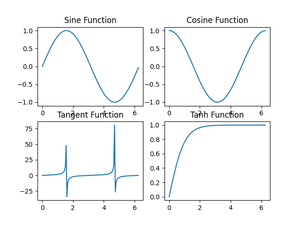












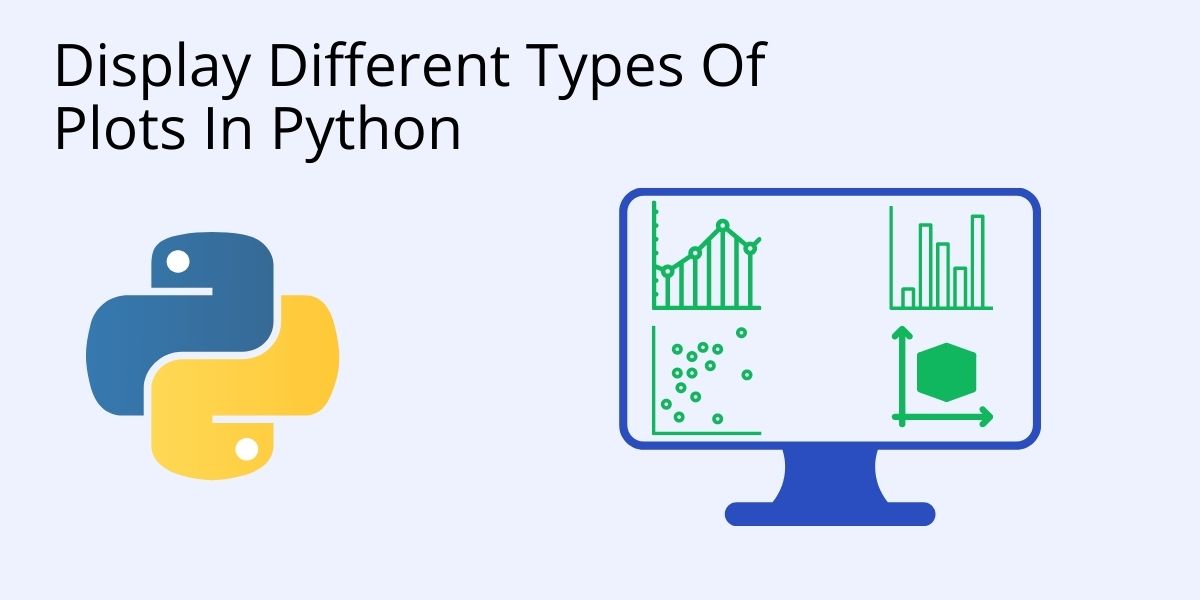


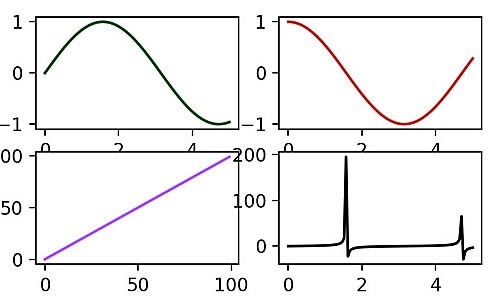
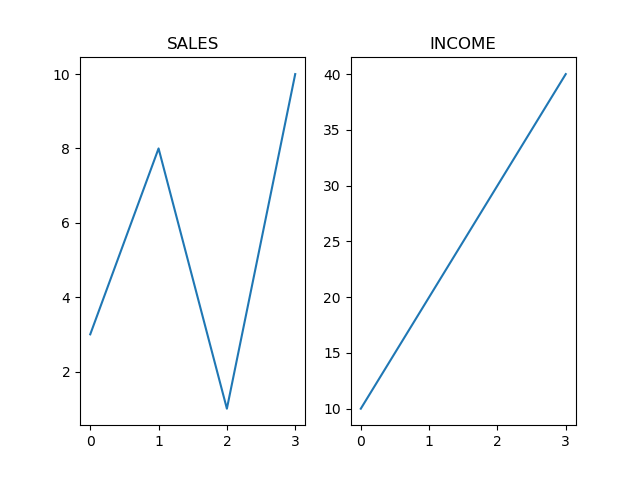




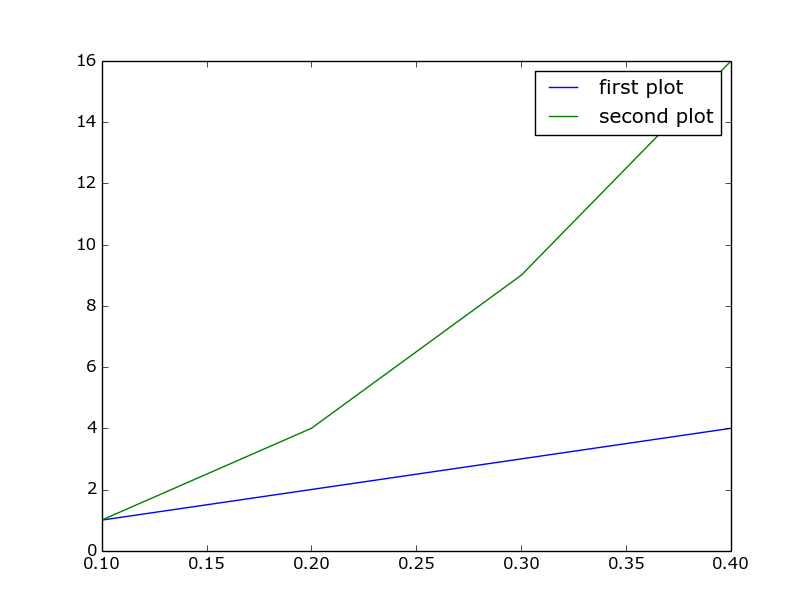


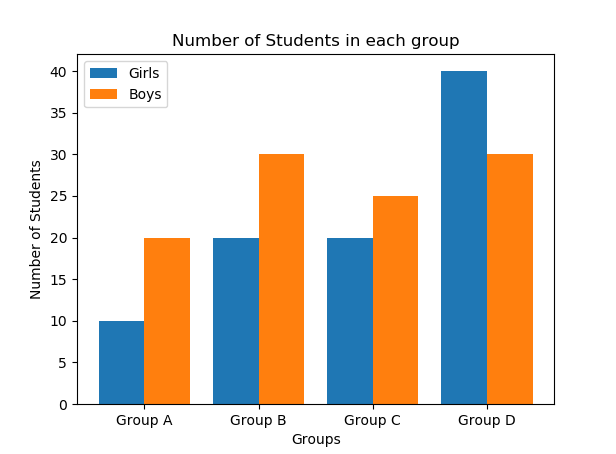
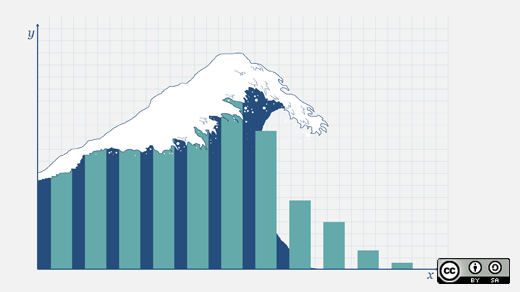


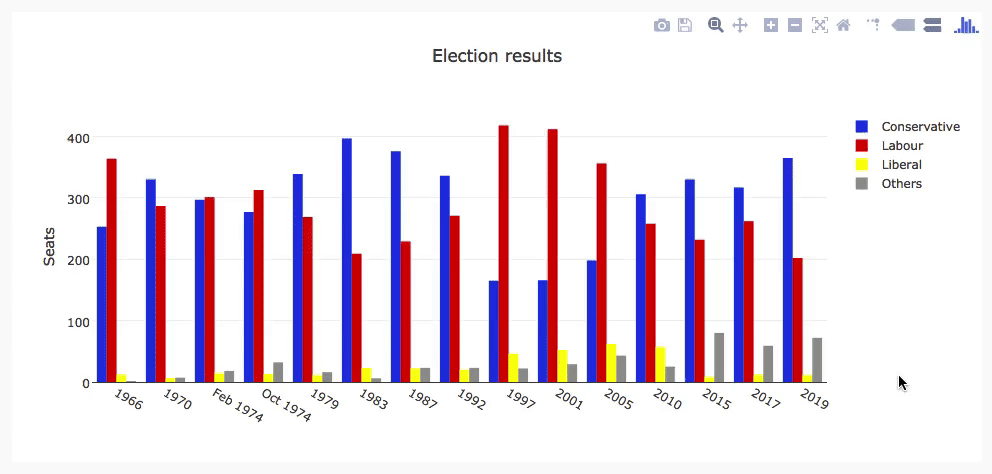





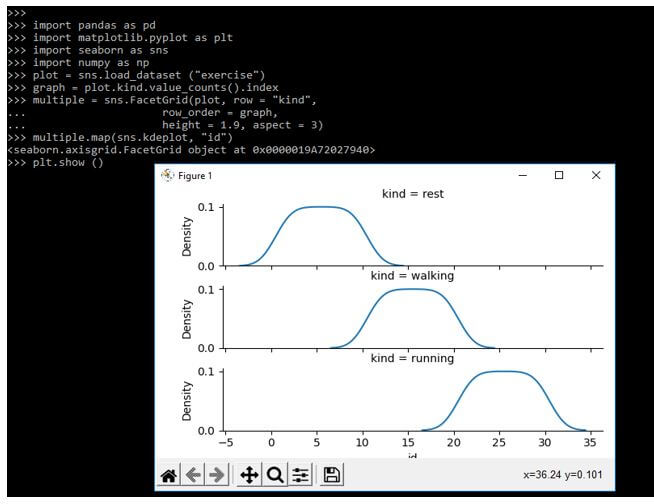





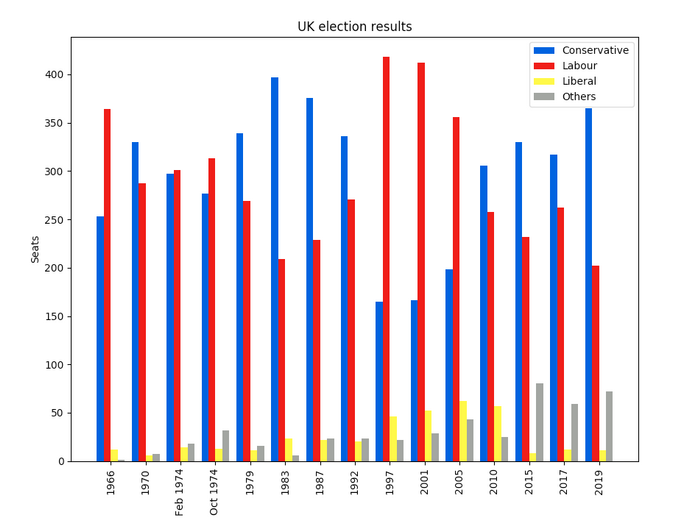

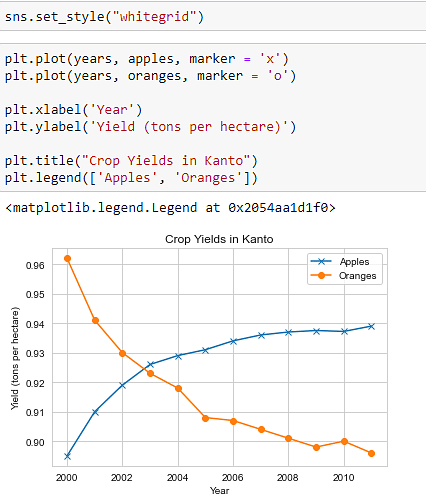


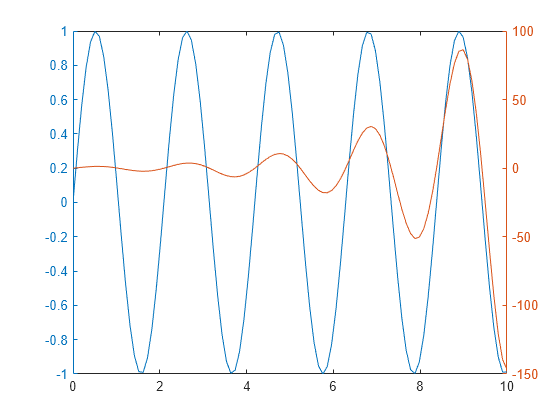
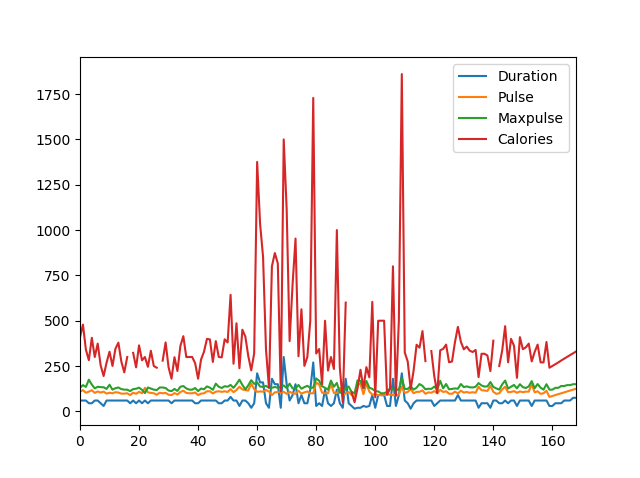

Article link: python multiple graphs in one plot.
Learn more about the topic python multiple graphs in one plot.
- Plot multiple plots in Matplotlib – GeeksforGeeks
- How to Plot Multiple Graphs in Python? – Learnt’s tutors
- Creating multiple subplots using plt.subplots – Matplotlib
- How to Plot Multiple Graphs in Python Using Matplotlib
- How to plot multiple functions on the same figure
- How to merge two existing Matplotlib plots into one plot – Tutorialspoint
- How to plot multiple values graph in matplotlib? – ProjectPro
- 4 simple tips for plotting multiple graphs in Python
- How to plot multiple graphs in Matplotlib – Tutorialspoint
- How to draw Multiple Graphs on same Plot in Matplotlib?
- Matplotlib Multiple Plots – Python Guides
- Subplots – Multiple Graphs on the same Figure
See more: https://nhanvietluanvan.com/luat-hoc